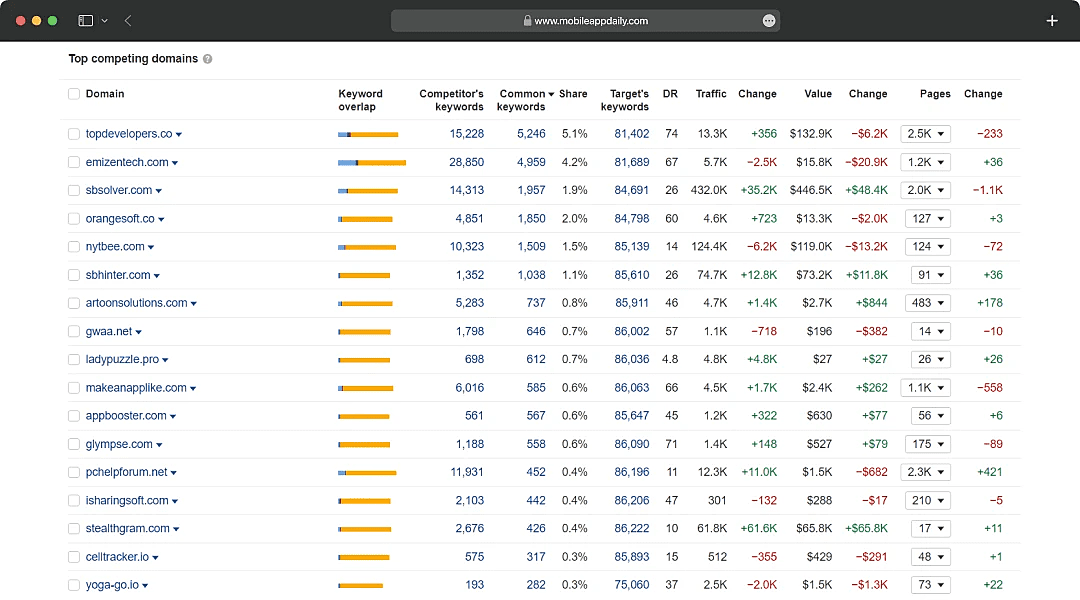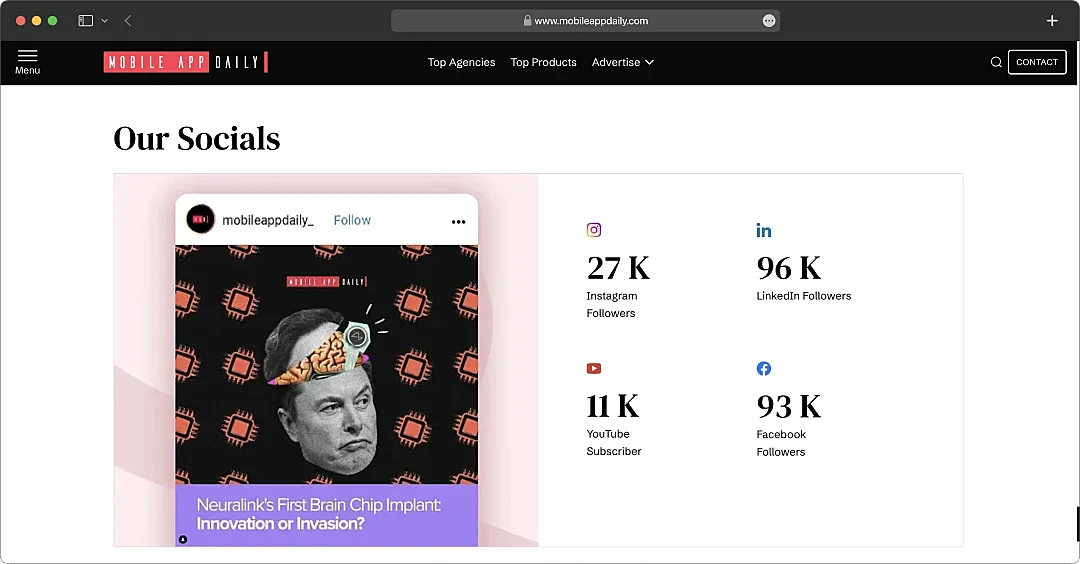
A competitive content analysis is the first thing that we do every time we pick a topic to draft. From making a competitor’s observation to preparing a comparative wireframe, our goal remains to find a strategy that works in our favor, whether to improve search engine rankings or the quality of the content.
But there’s more to it: for instance, using the best SEO tools to optimize the content’s quality to make it more search engine friendly. And like us, a competitive content analysis remains your secret weapon for catching up and eventually leading the pack as well.
Now, the question is, have you already implemented a competitive content marketing strategy?
If yes, is your competitive analysis approach working for you?
If not, this is the blog where you will find your answers.
Let’s take you deeper through what competitive analysis is and how to do it properly!
What is Competitive Content Analysis?
A competitive content marketing analysis helps you pinpoint what others are doing right and where they might be slipping up, giving you the insight needed to stand out. The digital world is fiercely competitive, and you need to do more than just create good content. You need a deep understanding of your industry.
This kind of analysis is not just for seasoned marketers. Students, professional essay writers, working professionals, and even hobbyist bloggers often need to do it as part of their strategy to draft something that is engaging, catchy, and has the ability to unlock greater digital growth.
Irrespective of the category you fall in, seeing how content analysis works allows you to apply the right content marketing methods to your own strategy right away. It's about learning from the best to develop a smarter, more impactful approach.
How to Execute a Perfect Competitive Content Analysis?
Executing the right competitive content gap analysis is a hierarchical process. If you have clarity over your ultimate goals, you can break down the process in a few steps to skyrocket your business using a core content strategy.
Here’s the series of steps you need to take!
1) Define Your Objectives
“Talking about product marketing and content strategy, I take a holistic approach to understanding the audience journey. We think about how we sell them a product in a short period. We think about how we create solutions for people in the long run. This is where the intersection of content strategy and product marketing comes from a career perspective.”
-Ashley Faus, Director at Atlassian, in an Interview with MobileAppDaily
[Checkout the Detailed MobileAppDaily Interview with Ashley Faus]
Setting specific objectives for your competitive content marketing research is crucial. These objectives will direct your efforts, whether it's to increase website traffic, boost engagement, or expand market share. Additionally, you will get to determine which competitors to focus on and what aspects of their strategy you should analyze.
2) Identify Your Competitors
Next, identify your competitors. Direct ones offer the same products or services as yours, while indirect competitors work with the same audience but offer the customers something different. Identifying both helps you understand the full landscape of content marketing strategies within your niche.
The methods for selecting a representative sample of competitors for in-depth competitive content analysis are:
- Review market share reports to pinpoint leading players;
- Analyze search engine results for your primary keywords;
- Monitor social media for brands frequently mentioned alongside your own;
- Consider customer feedback to see which other companies they consider.
3) Data-based SWOT Analysis of Content Marketing Competitors
Use digital marketing tools such as SEMrush, Ahrefs, and BuzzSumo to collect information. These platforms can provide valuable insights into what content performs best for your competitors, what keywords they are ranking for, and how their content is shared across social networks. Such competitive Content Marketing tools automate the collection of large data sets during your competitive content analysis and provide comprehensive analytics that can pinpoint successful content trends.
SWOT analysis of a competitor can help you identify what are the strengths of your successful competitors and what weaknesses are keeping them away from dominating the competitive market.
Manually exploring competitors' websites and their social media pages can also yield deep insights into their content strategy. Pay attention to the layout, the frequency of posts, and the interactive elements that encourage viewer engagement. Analyzing these components can offer clues about their content priorities and how they connect with their audience.
Here’s a sample data of MobileAppDaily competitors fetched from Ahrefs:

4) Analyze Content Types
Your competitors may be engaging their customers with a myriad of content types. In content analysis, marketing experts typically pay attention to the following:
- Blogs
- Videos
- Articles
- Infographics
- Whitepapers
- Podcasts
- Social media posts
- Memes
- Presentations
- Landing pages
Understanding the mix of content types used can help you identify gaps in your own content strategy or inspire you to experiment with new formats.
During your competitive content analysis, assessing how often competitors publish different types of content and the quality of those publications is essential. High-quality, frequent content tends to attract more engagement, which in turn boosts visibility and impact. Assess engagement by reviewing metrics such as shares, likes, and comments, and think about how to emulate successful strategies.
To give you an example, here’s how we at MobileAppDaily combine multiple content types to expand our market presence.

5) Assess Content Quality
To evaluate the quality of your competitors' content, consider implementing factors such as readability, SEO optimization, and visual appeal in your competitive content analysis strategy.
Readability ensures the content is easy to understand and is targeted appropriately for the audience, while SEO optimization includes the methods used to boost search engine rankings. Lastly, visual appeal can significantly affect how engaging the content is, with well-designed pieces often performing better in attracting and retaining audience interest.
There are certain ways to assess and improve the quality of your content. For instance:
- Deploy a team of editors to get your content reviewed and corrected before making it live. These editors can help you optimize your content to make it more user-friendly and more SEO-friendly as well.
- Use AI tools for quick content hygiene and fact-check reviews. There are tons of AI-powered tools like GPT to help you quickly do a content review. To empower your competitive content analysis, such tools can help identify any grammatical errors, issues in the flow of the content, engagement standards, or even verify whether EEAT standards are applied to the content or not.
- Check readability scores on tools like Yoast or Hemingway before publishing it further.
- According to SEMRush, almost 79% of content producers use AI to improve their content’s quality, you can leverage the same as well.
- Use SEU audit tools to identify the kind of keywords used and the amount of traffic that was attracted to the targeted competitors’ page.
6) Check Distribution Channels
When conducting a competitor analysis in content marketing, it's crucial to examine how and where competitors distribute their content. This examination should include their use of social media platforms, the frequency and content of their email newsletters, and their engagement with guest blogging opportunities.
Understanding these channels is fundamental in learning how to do competitive content analysis, as it reveals not just where competitors are active but also where they might be missing opportunities.
Evaluating the effectiveness of these distribution channels involves looking at the reach each channel achieves and the level of engagement. For instance, a competitor's social media might have a wide reach but low engagement, indicating that while their content is widespread, it may not be resonating deeply with audiences.
Conversely, high engagement in email newsletters could suggest a highly committed audience, which might be worth exploring in your own strategy.
7) Evaluate Engagement Metrics
To measure engagement, analyze social shares, comments, and the amount of time spent on the page. These metrics are pivotal as they provide direct insights into how well content is performing by indicating viewer interest and interaction. Often, high levels of engagement are indicative of the applicability and quality of information. For instance, if your content marketing strategy is LinkedIn-focused, leveraging LinkedIn analytics can play a big role.
Additionally, the tools that you should use in your competitive content analysis for tracking and comparing engagement across competitors' content can be:
- Google Analytics;
- BuzzSumo;
- Social Mention;
- Sprout Social
8) SEO Strategies
A thorough content marketing analysis includes examining competitors' SEO tactics, which involves analyzing how they use keywords, their link-building strategies, meta tags for SEO, and their positions in search engine results pages (SERPs).
This analysis helps identify what keywords are driving traffic to their sites and how their backlink profiles are enhancing their SEO performance. Insights gained here can guide your own SEO enhancements, ensuring your content is as discoverable as theirs.
9) Identify Best Practices and Gaps
With the results of your competitive content analysis, you can pinpoint what strategies are working well for others in your industry. Perhaps some competitors excel in video content, while others have mastered the use of interactive blogs.
On the other hand, identifying gaps—areas where competitors are weak or absent—can provide you with opportunities to differentiate and capture untapped audience interest.
To hone your content strategy:
- Adapt the successful and competitive content marketing techniques that align with your brand;
- Explore underutilized channels or content types revealed by the gaps;
- Implement a mix of high-performing SEO keywords found in the analysis;
- Enhance engagement techniques based on metrics from competitors.
Why is Competitor Analysis for Content Crucial?
The goal of a competitive content analysis strategy is to give you an edge over competitors. Analyzing your competitors is not only crucial for a great competitor strategy, but also to identify what can give your business a boost over successful competitors. To justify the need for competitor content analysis further, here are a few stats collected during our research.
- Approximately 58% of B2B marketers have experienced a positive impact on their sales and revenues in the last 12 months, which is an increase from 42% from the last year. (Content Marketing Institute)
- Until 2021, almost 69% of content marketers had already invested in SEO. (Hubspot)
- Currently, 67% of content marketers are already relying on AI for content and SEO. (SEMRush)
- Almost 53% of business owners rely on content marketing activities, investing their money and time. (The Manifest)
- 85% of marketers are expecting to increase their video production budgets in 2024 to focus on more video-based marketing. (SEMRush)
- Almost 80% of small business owners and marketers are not relying on other sources to write content. In parallel, almost 17% of businesses have in-house writers hired, and approximately 14% of small businesses have freelancers’ networks. (SEMRush)
Case Studies to Inspire Your Competitive Content Analysis
1) Zendesk
“The flexibility and power we get from AWS have helped Zendesk push past the cutting edge of deep-learning technology in the customer-service space.”
- Arwen Griffioen, Data Scientist, Zendesk
Zendesk, a software-as-a-service company, made the implementation of an AI chatbot its objective after a thorough competitive content analysis of the industry. The organisation leveraged AWS’ deep learning services to deploy a smart AI-powered chatbot and help it push its Alexa rankings.
This AI chatbot implemented by Zendesk became extensively capable of automating customer responses using deep learning tech, positioning the company among innovative companies with the most effective customer support solutions.
2) The Hustle
“By emphasizing CTR, The Hustle aims to not only capture the reader's attention, but it also encourages them to take action and interact further with the content; This approach reflects a strategic effort to drive meaningful engagement beyond just opens."
-Jenzen, The Hustle’s MarTech expert, in a conversation with Hubspot
The Hustle secured 43k+ additional clicks in one quarter; how did they do that? They did a deep content competitor analysis and combined it with some effective approaches that included A/B Testing, optimized email subjects, maximizing CTRs, and more.
To find the best email subjects, The Hustle trialled a range of subject lines to identify the most effective one. The test included identifying the content prompting faster responses from receivers making The Hustle’s approach one of the most successful content marketing examples.
How Can We Skyrocket Your Content Strategy?
We at MobileAppDaily can help you use your content strategy to expand your presence across larger target markets. Simply write for us and help your content become your voice on a larger platform. We also offer a greater knowledge base to keep you in the loop with the evolving digital marketing trends and tools recommended by the leading digital marketing companies.
So, if you are ready to scale up, give us a ping!
Conclusion
For any content creation strategy, including a content competitive analysis is a must. You can uncover invaluable insights by examining how competitors strategize their content, distribute it, engage audiences, and optimize for search engines. This strategic approach not only illuminates what's currently effective but also highlights potential areas for innovation in your own content strategy.
To summarize the above data, there are plenty of tactics for an insightful competitive content analysis. For instance, leveraging SEO tools, creating engaging content, and planning a strategic distribution. So, before kickstarting the actual analysis, consider prerequisites that can help such as clear objectives, an understanding of tools, and a research wireframe.
Frequently Asked Questions
-
How to do a competitor's content analysis?
-
How to do content marketing competitor analysis?
-
How to use competitor analysis to find content ideas?
-
What are the key metrics to consider in your competitive content analysis?

Content Writer
Sakshi Kaushik is a wordsmith extraordinaire who transforms complex technical jargon into captivating, must-read articles. Armed with a Masters in Economics, Sakshi dissects intricate topics with the precision of a seasoned expert. Her insights have graced prestigious platforms like Hackernoon, Ecowiser, and Medium, captivating readers and tech aficionados alike. With a career spanning influential companies like Teleperformance, Finex, and SparxIT Solutions, Sakshi is well-versed in navigating both the keyboard and the boardroom.
In addition to her extensive experience, Sakshi holds HubSpot certifications in Digital Advertising and Content Marketing, and has earned further credentials from UpGrad, Coursera, and Great Learning. Dedicated to sharing her expertise with mobile app developers and tech enthusiasts, Sakshi's passion shines through her writing. When she's not crafting compelling content, she enjoys diving into thrilling novels and exploring diverse worlds.
















